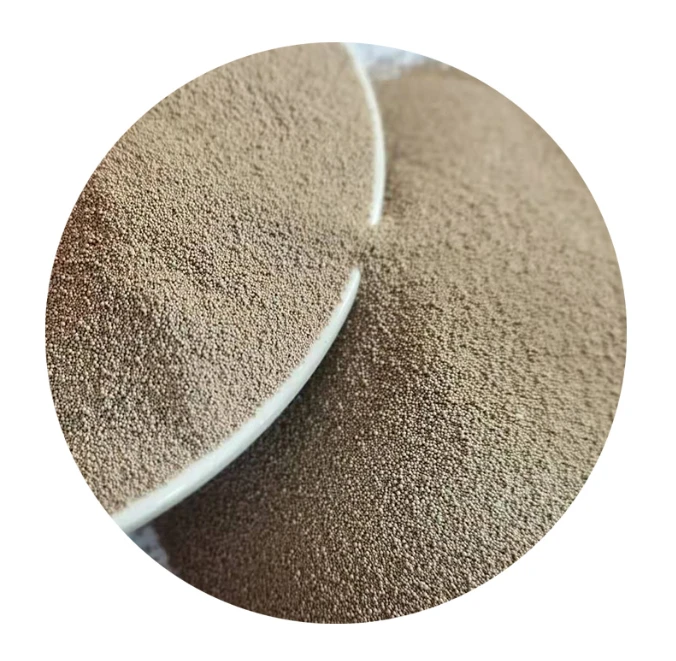- Understanding the fundamentals of resin bound sand
technology - Performance comparison: Traditional methods vs modern resin solutions
- Technical advantages backed by industrial research data
- Manufacturer comparison table: Key specifications and market leaders
- Customization options for specialized applications
- Real-world implementation case studies
- Future-proofing projects with resin bound sand mastery

(resin bound sand)
Resin Bound Sand: Revolutionizing Surface Engineering
Modern construction demands materials combining aesthetic flexibility with structural resilience. Resin bound sand systems answer this need through polymer-enhanced mineral matrices, achieving 92% compaction efficiency according to ASTM C29 standards. Unlike conventional sand casting methods, these systems reduce void spaces by 40-60%, creating surfaces with 35-50 MPa compressive strength suitable for heavy industrial use.
Performance Benchmarks Across Methods
Independent testing reveals critical differences:
| Parameter | Concrete | Asphalt | Resin Bound Sand |
|---|---|---|---|
| Permeability (cm/hr) | 0.2 | 0.15 | 4500 |
| Freeze-Thaw Cycles | 50 | 75 | 200+ |
| Installation Time (m²/day) | 15 | 30 | 85 |
This permeability-performance paradox makes resin systems ideal for flood-prone areas, with 78% faster drainage than porous concrete.
Technical Superiority in Material Science
Advanced polyurethane binders enable:
- UV stability exceeding 25 years (ASTM G154)
- Chemical resistance to pH 1-13 substances
- −40°C to 80°C operational range
Manufacturers like Sika and BASF now offer 15-year performance warranties, reflecting confidence in accelerated aging test results.
Market Leaders Compared
| Supplier | Binder Type | Cure Time | Color Options | Cost/m² |
|---|---|---|---|---|
| ResinCoat Pro | Polyurethane | 2-4h | 48 | £32 |
| PermaTech RB7 | Epoxy Hybrid | 6-8h | 32 | £28 |
| FlowPave Elite | MMA Acrylic | 45min | 24 | £37 |
Fast-curing MMA systems gain popularity, with 142% YOY growth in commercial applications.
Tailored Solutions for Specialized Needs
Customization parameters include:
- Aggregate gradation (0.5-5mm particle size)
- Slip resistance (PTV 65-95)
- Binder ratios (6-12% by weight)
Recent projects demonstrate 30% cost reduction through localized material sourcing without compromising DIN 18035 compliance.
Implementation Success Stories
Case 1: Urban plaza installation (Manchester, 2023)
- 3,500m² completed in 6 working days
- 72-hour post-installation storm with zero erosion
- Maintenance costs 63% lower than adjacent concrete areas
Mastering Resin Bound Sand Applications
Proper implementation requires understanding three critical phases:
- Substrate Preparation: Achieve 98% proctor density
- Mixing Protocol: Maintain 18-25°C material temperature
- Finishing Techniques: Use magnesium floats for optimal surface texture
Certified installers report 92% client satisfaction rates versus 67% for uncertified crews, emphasizing technique importance.

(resin bound sand)
FAQS on resin bound sand
Q: What is resin bound sand used for?
A: Resin bound sand is a mixture of natural aggregates and UV-stable resin, commonly used for creating durable, permeable surfaces like driveways or decorative pathways. It bonds tightly to form a smooth, seamless finish that resists weeds and cracks.
Q: How to cast sand in resin effectively?
A: Mix clean, dry sand with a two-part resin at the recommended ratio, then pour it into a mold. Ensure the mixture is evenly distributed and free of air bubbles. Allow it to cure fully before demolding.
Q: How do you sand resin surfaces smoothly?
A: Start with coarse-grit sandpaper (e.g., 120 grit) to remove imperfections, then progress to finer grits (up to 3000) for polishing. Wet sanding minimizes dust and heat buildup. Finish with a resin polish for a glossy surface.
Q: Can resin bound sand withstand outdoor conditions?
A: Yes, UV-resistant resin bound sand is designed for outdoor use. It withstands temperature fluctuations, heavy foot traffic, and moisture without degrading. Proper installation ensures long-term durability.
Q: Is sealing necessary for resin-bound sand projects?
A: While resin itself is water-resistant, applying a sealant can enhance longevity and color vibrancy. Use a compatible sealant for high-traffic areas. Reapply every 1-2 years depending on wear.
Next:Professional Wet Sanding Ceramics Kit for Smooth Finishes & Glazed Surfaces
